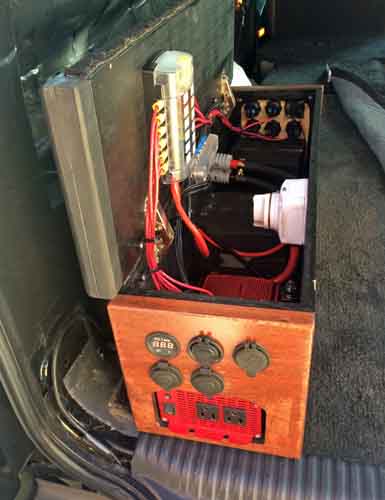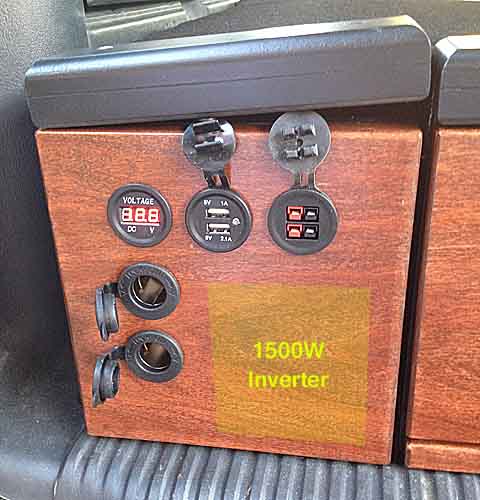Martinjmpr
Wiffleball Batter
Back in August I replaced the single 12v battery in our trailer (a T@B Clamshell) with a dual 6v golf cart battery setup. That required a new battery box and now I have an empty battery box sitting in my Pathfinder. I was going to just throw it out when I got an idea: Maybe I could get an inexpensive 12v car or marine/RV battery and make a kind of "poor man's Goal Zero" portable 12v power setup. :sombrero:
.
The idea would be that I could use it to power 12v accessories when camping and it would not be tied into either my truck or the camper.
.
I would set it up to charge off solar if necessary but if I wanted to charge it by plugging it into one of the 12v power sockets on my vehicle, what is the most amp/hour rating I could expect from the little 12v setup (while the truck is running, naturally.) 3 amps? 5 amps? Just trying to do the math here and assuming I get, say, a 75 AH battery and it gets 50% discharged, how many hours would I need plugged into a 12v socket to recharge it?
.
I know folks here have figured this stuff out already (Dave in Denver I'm looking at you!)
.
Thanks in advance! :ylsmoke:
.
The idea would be that I could use it to power 12v accessories when camping and it would not be tied into either my truck or the camper.
.
I would set it up to charge off solar if necessary but if I wanted to charge it by plugging it into one of the 12v power sockets on my vehicle, what is the most amp/hour rating I could expect from the little 12v setup (while the truck is running, naturally.) 3 amps? 5 amps? Just trying to do the math here and assuming I get, say, a 75 AH battery and it gets 50% discharged, how many hours would I need plugged into a 12v socket to recharge it?
.
I know folks here have figured this stuff out already (Dave in Denver I'm looking at you!)
.
Thanks in advance! :ylsmoke:



